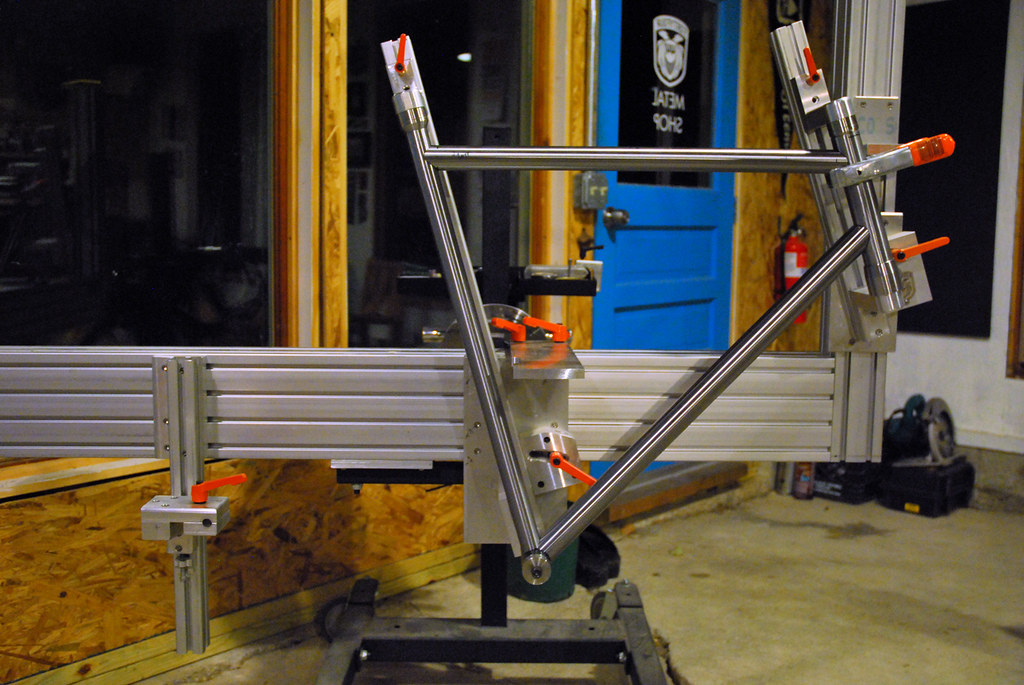
Originally Posted by
Mark Kelly

A normal tube junction is the intersection of two cylinders which is easy to calculate and plot. When you "ovalise" you make one tube an elliptic cylinder.
An elliptical cylinder is like an ordinary cylinder sliced obliquely into many many layers and then these layers restacked; imagine cutting lots of thin diagonal slices off a baguette and then stacking them vertically. If the baguette was round, the stack will form an elliptic cylinder.
This suggests a solution to the problem: First calculate the equivalent angle of the diagonal slices, which will be the the arccosine of the ratio between the minor and major axes of the ellipse. Say you have squished a 34.9mm tube down so that the short axis is now 31.8mm. The long axis will be approximately 38mm. The angle is thus arctan (31.8/38) ~= 33 degrees.
The intersection of the two tubes will be equivalent to the intersection of the actual seat tube and a notional 31.8mm tube offset by the required angle, so if your sta is 73 degrees the intersection will be the equivalent of a 31.8mm tube at 40 degrees (= 73 - 33). Of course if you use one of the mitre calculators to print a paper template that template will be for the notional equivalent cylinder, not for your elliptic cylinder.
I think you could get around this by angling the template to the tube by the offset angle when aligned to the major axis: fix a thin rigid support to the centre axis of the template, place the front edge on the tube at the major axis, lift the back edge until the template is at the correct angle to the tube and then carefully wrap to fit. I will try this today to see how it goes.


 Likes:
Likes: 

 Reply With Quote
Reply With Quote



Bookmarks